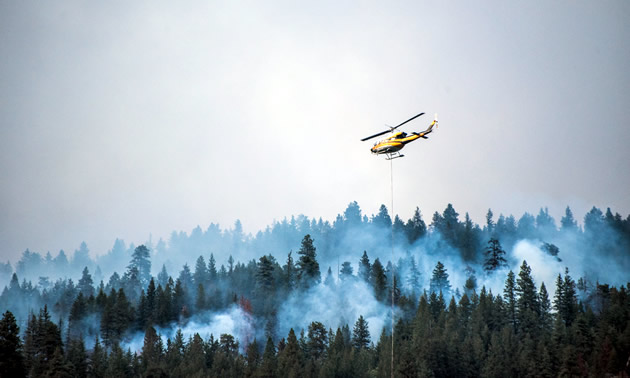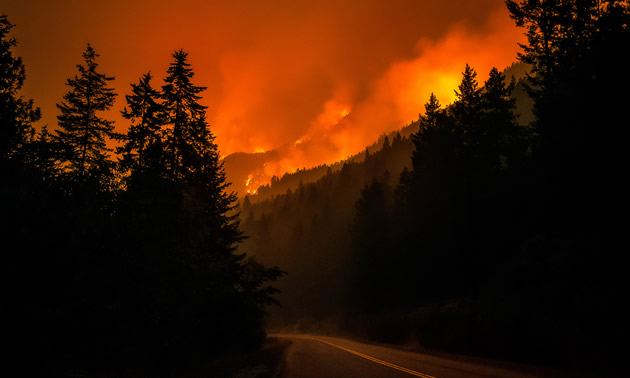Is your business prepared for a fire or flood?
Property insurance and B.C. provincial disaster insurance do have some overlap in coverage

Helicopters were used to fight wildfires around Syringa Creek in the summer of 2018. — Ashley Voykin photo
What will the province of British Columbia cover and what won’t they cover in a state of emergency? That’s a tricky question to answer, as provincial coverage can vary from region to region.
When the province declares an emergency situation eligible for Disaster Financial Assistance (DFA), the program can provide financial aid to individuals and communities recovering from disastrous events, which have resulted in uninsurable property and infrastructure damage.
However, in many cases evacuees' homeowners or tenant insurance will provide greater support than what is available through public aid.
“Fire is the basis of all property insurance, and is the primary coverage on all property policies,” said Todd Pellerin, commercial account executive at Hub International. “In a standard policy, fire includes sudden and accidental fires caused by your insured business and operations, but also resultant damage from any adjacent business that suffers a loss (when their damage migrates to your location). Fires caused from forest fires, lightning and power surges are also covered under a standard policy.”
Flood coverage is often optional and not automatic. Most homeowner policies do not include flood insurance, while most commercial policies will.
Fire damage (including wildfires) is not eligible for provincial DFA because of its general insurability. However, BC home and business owners should confer with their insurance company to ensure they have adequate coverage.
“In regards to insurance when preparing for the possibility of a catastrophic event like a forest fire,” said Pellerin, “we always like to advise our clients to take pictures of their insured property—or better yet—walk around with a video device and describe the items being shown.

Fire damage is not eligible for provincial Disaster Financial Assistance because of its general insurability. Pictured above is the Syringa Creek wildfire on August 23, 2018. — Ashley Voykin photo
“Explaining ‘what it is, how old it is and how much it cost when you purchased it’ after a claim alongside this recording will save you hours of explaining and quantifying your loss to the adjuster.”
Making several copies of important documents and recorded assets and storing them in different locations or on a digital cloud system is an important first step. The second is having an emergency preparedness kit ready to go, one that contains your family’s personal information, passports, insurance (both property and health policies) and any other important records that would be difficult to replace.
“I strongly recommend going to www.getprepared.gc.ca to get more information outside of insurance on how to plan for a catastrophic event,” said Pellerin. “This site provides excellent ideas and plans so you can design the best strategy for you.”
When it comes down to it, the best practice is to take steps towards proactive action. Ensuring your individual insurance covers what you need it to, while also documenting and filing important assets in secure locations, can prevent a disastrous situation from becoming worse.
For more information on DFA and what the B.C. government will cover in emergency situations, visit the government website.






Comments